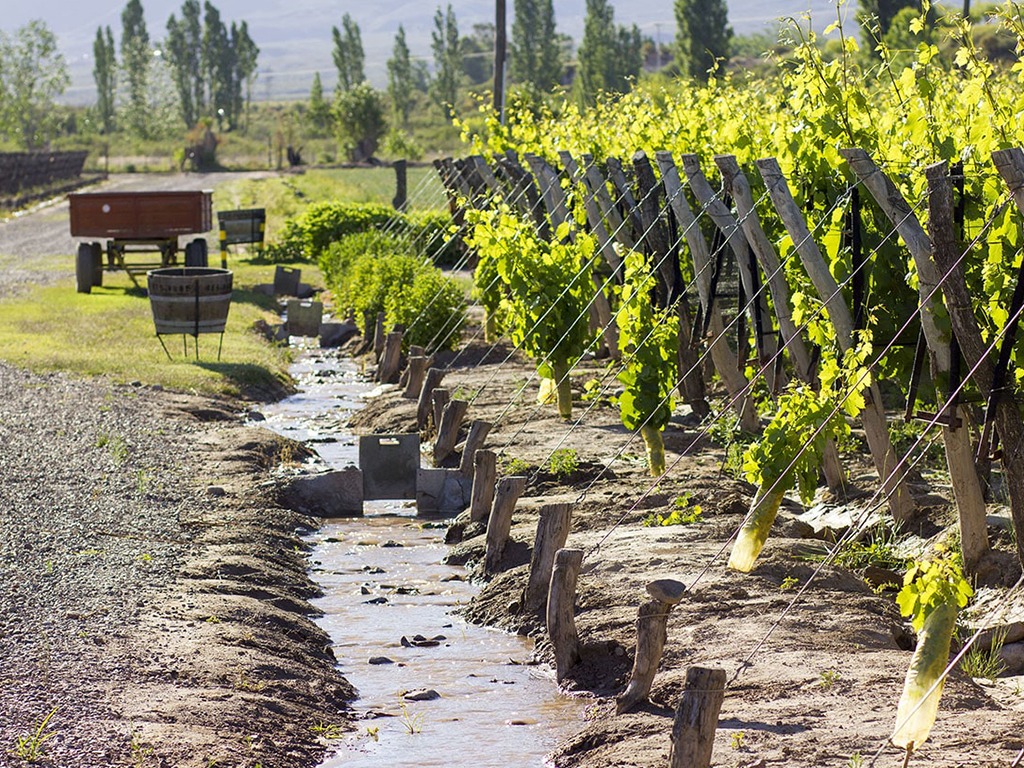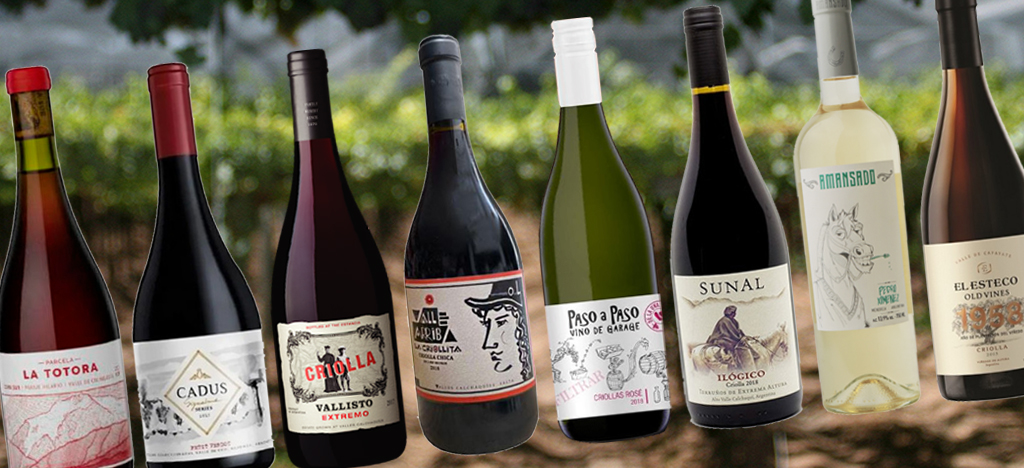Why everyone in Argentina is talking about Criolla grapes? Most wine drinkers follow a similar path on their journey of exploration: the first stage is well-known regions such as Bordeaux and Mendoza, then come the famous varieties; Cabernet Sauvignon, Pinot Noir, Nebbiolo, etc. and after that sheer curiosity takes over. This is when one begins to delve into lesser known regions and varieties where pleasant surprises lurk around every corner.
Right now, many of these curious souls are focusing on heritage wines: put simply wines these are wines that reflect a style and flavour you can’t find anywhere else in the world, offering a unique sensory experience. In Argentina, this is where the group of Criolla grapes becomes especially attractive.
Several different varieties fall under the Criolla grouping – and there are more still to be identified – all of which first appeared in the Americas after cross-breeding between European varieties and their descendants (for instance, a Criolla and a European variety, or two Criolla varieties). Some are famous such as Torrontés Riojano – a cross between Listán Prieto and Muscatel de Alexandria – which took place back in the 18th century but others are lesser known such as Criolla Grande, Cereza, Moscatel Rosado and Pedro Giménez. A handful, meanwhile, have barely been studied at all.
With the exception of Torrontés Riojano which is sold commercially in Argentina and overseas, at the moment these varieties tend to presented as patriotic alternatives or historical curiosities for enquiring palates. But the trend is growing more popular driven more by demand than supply: wine geeks and younger palates mining interesting new seams of flavour have become a niche market. And so, Criolla grapes suddenly demand further scrutiny.
The invisible world of Criolla grapes
Far from being plants lost on the local scene, Criollas in fact account for about a third of the surface area under vine in Argentina (60 thousand hectares out of 215 thousand overall). As with Malbec, this is thanks to the choices made by producers, who overwhelmingly opted for Criolla varieties because grapes such as Criolla Grande and Pedro Giménez tend to be very resistant and offer high yields, qualities bound to earn a place in the heart of every winegrower. It’s their oenological quality, however, that hasn’t always come up to scratch.

But what if that were to change? What if producers focused on improving their quality? This is where the pieces start to come together, beginning with lower, more carefully managed yields in the vineyard. In such conditions they produce easy-drinking wines with a very distinctive perfume that is turning out to delight the palates of experts and curious drinkers alike.
The producers working in this vein with Criolla varieties (apart from Torrontés Riojano, which is produced by many wineries) include Durigutti Winemakers, who are exploring Cereza with their Cara Sucia line, Amansado with Pedro Ximénez Joven, and Lucas Niven with Criolla Argentina. All three are light, fresh and thirst-quenching.
But we’re only now beginning to discover how big the Criolla universe might be. The first study of Criolla genetic material carried out by the agricultural engineer Jorge Prieto at INTA (The Argentine Institute of Agricultural Technology) began in 2011: ‘To date we have discovered about 50 new varieties. Most are descended from Listan Prieto (known as Criolla Chica in Argentina) and Muscatel de Alexandria,’ said Prieto at a Wines of Argentina seminar titled ‘The Criollas: future wines from the past’.
Prieto’s study also identified a variety, Criolla Nº1, partially descended from Malbec and right now it is considered the grape with the greatest oenological potential. At another Latin American wine congress in 2020, Santiago Sari, an engineer at INTA, noted: ‘The reds and rosés have a similar or lower pH to Malbec from Luján de Cuyo (which could mean they have good ageing potential) while varieties such as Canelón, Moscatel Rosado, Blanca Oval, Criolla Chica and Pedro Giménez were seen as potential bases for sparkling wines.’
The results of this research will come to light over the next few years.
Criollas Lost in Translation
The heritage wine trend has also led to the resurgence of a grape that isn’t in fact native to Argentina at all: Criolla Chica, or Listán Prieto, is a variety assumed to originally be from the Canary Islands that spread across the Americas in colonial times. Over the years, its origins were forgotten and it took on new names – it’s known as País in Chile and Mission in the USA – as well as mingling with native varieties in gardens, domestic pergolas and forgotten mountain vineyards.
DNA studies such as those carried out by Prieto have determined that it may not be native but it is the source of many native Criolla varieties. Its oenological potential makes it the most popular at the moment among those producing quality wines although it is not yet widely planted: just 359 ha are under vine in Argentina.
Agustín Lanús, a producer from the Calchaquí Valley, says something about Criolla Chica that also applies to all the Criolla grapes: ‘It’s ours, it’s rustic, it’s noble, it adapted to the region hundreds of years ago, it isn’t hurt by frosts and it always gets to the end of the cycle intact.’ In addition to genetics, producers know how to grow and manage the vines to ensure that they prosper.
Good examples of Criolla Chica include Valle Arriba Criolla Chica, El Esteco Old, Vines, Vallisto and Sunal Ilógico, all from the Calchaquí Valley, together with the Mendozan Cadus Signature Series Criolla and Cara Sur La Totora Criolla Chica.
While with Criolla Grande you can find Paso a Paso, Vía Revolucionaria by Matías Michelini and there is even a blend of Criolla Chica and Criolla Grande like Roca Madre.
And, of course, there are plenty more. But to begin with a brand new flavour profile, these are an excellent place to start.



